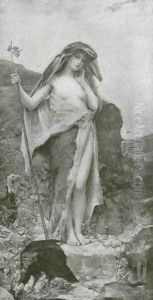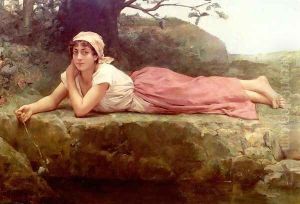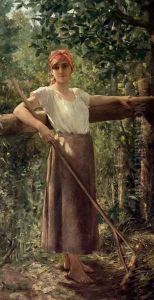Jacqueline Comerre-Paton Paintings
Jacqueline Comerre-Paton was a French artist born in 1859, distinguished for her contributions to painting and her involvement in the artistic movements of her time. She was part of a milieu that saw the intersection of traditional art practices with emerging modernist sensibilities, navigating her career in a period rich with artistic evolution and social change.
Jacqueline was married to Léon Comerre, a notable French painter, which positioned her within an influential network of artists and intellectuals. Despite the overshadowing presence of her husband's career, Jacqueline managed to carve out her own space in the art world, demonstrating resilience and a unique artistic vision. Her work often explored themes of femininity, nature, and mythology, imbued with a delicate sensitivity to color and form that became characteristic of her style.
Throughout her life, Comerre-Paton exhibited her works in prestigious art salons and exhibitions, garnering recognition and accolades for her contributions to French art. Her ability to blend classical techniques with a nuanced exploration of contemporary themes allowed her art to resonate with audiences both in her time and posthumously.
The early 20th century was a period of significant change in the art world, with movements like Impressionism, Post-Impressionism, and Symbolism breaking away from traditional norms. Jacqueline navigated these transitions with adaptability, incorporating new ideas and aesthetics into her work while maintaining a connection to classical artistic values.
Jacqueline Comerre-Paton passed away in 1955, leaving behind a legacy that has been somewhat obscured by the passage of time and the prominence of her husband's career. Despite this, her contributions to art continue to be appreciated by those who seek to uncover and celebrate the roles of women in the history of art. Her life and work serve as a testament to the challenges and achievements of female artists in a male-dominated field, offering inspiration and insight into the complexities of artistic endeavor in the late 19th and early 20th centuries.


